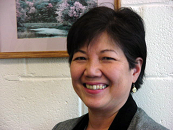
Kem B. Louie
William Paterson University, United States
Title: An innovative strategy to assist novice nurse educators’ transition into the academic faculty role
Biography
Biography: Kem B. Louie
Abstract
The purpose of this presentation is to examine the academic nurse faculty shortage particularly in the United States and worldwide. The presentation will discuss the research of an innovative strategy to assist novice nurse educator’s transition into the academic faculty role by incorporating the National League for Nursing Competencies for the Academic Nurse Educator (2013) in the professional development program.
The academic nurse faculty shortage has been described and researched for nearly the last 20 years in the United States (US). Currently, the national nurse faculty vacancy rate is estimated to be 7.9%. In the US, a large portion of the faculty rate is related to positions requiring doctoral degrees (American Association of Colleges in Nursing (AACN), 2017). Also the National League for Nursing (NLN) found that of the 673 member schools of nursing, 554 schools have reported difficulty in recruiting and hiring faculty (2016).
Several reasons have been found to this shortage and they include increasing faculty age, retirement, higher compensation in service settings, and masters and doctoral degree programs not graduating large numbers of students. There is also research that the shortage of academically qualified faculty in schools of nursing is also occurs worldwide. Several reasons found by Nardi were global migration of nurses, aging of nursing faculty, devaluation of faculty role by nursing, devaluation of faculty role by universities, financial incentives to leave faculty role among others.
More recently, in addition to the reasons found leading to the nurse faculty shortage, attrition of faculty other than retirement is being studied. Fang and Bednash (2014) studied attrition from 2010-2011 in the US and found the attrition rates to be 11.8%. They found in the survey that 20% was due to retirement, 48% left for non-academic positons, 14.4 % left for full time positions at other schools of nursing and 11.2% left for part-time positions a schools of nursing and in hospital service and nonacademic positions. Within this last group, it was reported that the faculty were generally were non-tenures and did not have a doctoral degree, low salary, heavy workload and dissatisfied with the faculty role. Other reasons found by Suozzo (2015) include role conflict and lack of job satisfaction. Others noted the lack of or ineffective mentoring and faculty development for novice educators. (Legare and Armstrong, 2015)
There were two qualitative studies on novice faculty in Pakistan and Iran which also addressed role conflict and job dissatisfaction (Riyasat, Waqas, Azhar, Gillani & Kousar 2017; Heydai, Hosseini, Karmi Moonaghi, 2015).
It is proposed in this presentation that an innovative professional/faculty development program be provided as part of the transition for the novice faculty. Parris and Moss (2016) noted that finding ways to assist the clinical expert nurse to become an expert nurse faculty include transitions programs which include role transition through mentoring with experience nurse faculty.

